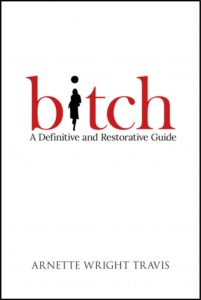After spending our last issue immersed in all things feminist, I was both excited and trepidation-ridden to read Bitch: A Definitive and Restorative Guide by Arnette Wright Travis. Trepidation because everything I thought I knew about feminism had been challenged while working on last issue, and I wasn’t sure I was ready to upend the apple cart again.
That being said, I was pleasantly surprised by how easy a read Bitch is. Travis delves deep into the origins of the word “bitch,” the societal implications of using—and accepting—the word, and the movement to reclaim the word “bitch” in the name of equality for women. She infuses anecdotes about her own life into a well-woven tapestry of women’s rights.
From the suffragette movement to Trump versus Clinton to #metoo, Travis combs American history in an effort to understand and explain the oppression of women at the hands of society and the government.
The historical timeline of the fight for equality for women is cleverly interspersed with discussions on the word “bitch” and how it is used. While I am guilty of using the word in each of the ways she describes (in anger; in describing a strong woman I feel threatened by; in describing a wimpy dude; in reclaiming a bad-assed attitude), Travis’ microscope allowed me to see the potential damage of hurling out such a familiar word.
My aha moment came when Travis describes how water molecules react negatively to harsh words; therefore, if we are composed mostly of water, she hypothesizes that negative words can have effects on a cellular level. Not everyone agrees that this is scientifically accurate, but her logic is simple, refreshing, and accessible.
While some could argue that Bitch doesn’t give enough attention to intersectional feminism (despite Travis self-identifying with the ideology), I appreciate that she doesn’t try to cast the net too wide. The reality is that this topic cannot be contained to 150 sparsely filled pages. Travis picks her battles and fights them, venomously.
My only real issue was with the physical quality of the book. The spine was stiff; I had to crack it (the horror!), leaving the pages fanning, never to close properly again. After one read, it looked like it had been passed around a group of 20 women as opposed to spending two days in my purse. But I’ll forgive the poor construction for a well-executed book on feminism and equality.

